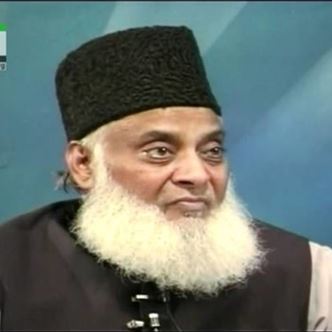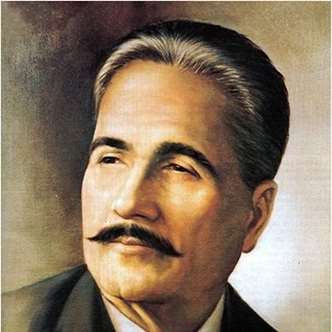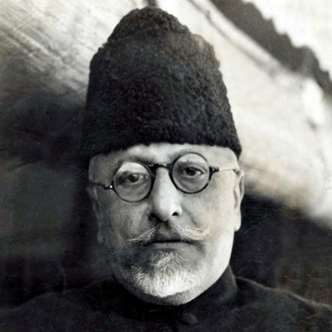Revialist Scholars
Revialist Scholars Ahya-e-Islam
Tanzeem Ahya-e-Islam is inspired by the following scholars from recent past, whose efforts and work for the revival of islam is well know throughout the islamic world.

Dr Israr Ahmed
Dr. Israr Ahmad, the second son of a government servant, was born on April 26, 1932 in Hisar (a district of East Punjab, now a part of Haryana) in India. He graduated from King Edward Medical College (Lahore) in 1954 and later received his masters in Islamic Studies from the University of Karachi in 1965. He came under the influence of Allama Iqbal and Maulana Abul A`la Maududi as a young student, worked briefly for Muslim Student’s Federation in the Independence Movement and, following the creation of Pakistan in 1947, for the Islami Jami`yat-e-Talaba and then for the Jama`at-e-Islami. Dr. Israr Ahmad resigned from the Jama`at in April 1957 because of its involvement in the electoral politics, which he believed was irreconcilable with the revolutionary methodology adopted by the Jama’at in the pre-1947 period.

Molana Moududi
Maududi founded the Jama'at-i-Islami (Society of Islam) in 1941 as a centralised, strictly hierarchical organisation,8 similar to the MB. JI has served as a model for other Salafist organisations. As a parliametary party, it deliberately remained out of goverment until 1948, when it accepted the idea of gradual reform within government.9 Having originally opposed Indian nationalism in favour of pan-Islamism, Jama'at-i-Islami also later discarded this idea.10 This and similar ambiguities are indicative of the flexible heritage later Salafist movements drew upon.
Maududi's Jama'at-i-Islami gave rise to the two most important mujahideen factions in the Afghan civil war, that of Ahmad Shah Masud (who leavened his Salafism with traditionalism), and Gulbuddin Hikmatyar. The hierarchical structure of Jama'at-i-Islami, considered unconventional from an Islamic point of view, was apparently inspired by modernist organisational methods. Masud's and Hikmatyar's organisations were also organised on a modern, hierarchical basis that mirrored that of the Soviet invaders.

Dr Alama Iqbal
Sir Muhammad Iqbal, fondly remembered as Allama Iqbal, was born in Sialkot on November 9, 1877. He was educated at Sialkot and Lahore, and later at Cambridge. After receiving a doctorate from the Ludwig-Maximillian University at Munich in 1907 for his thesis The Development of Metaphysics in Persia, and bar at law from Lincoln's Inn in 1908, he practiced law for many years in Lahore, the city he had adopted as his home.

Abul Kalam Azad
Maulana Abul Kalam Azad's real name was Abul Kalam Ghulam Muhiyuddin. He was popularly known as Maulana Azad. Maulana Abul Kalam Azad was one of the foremost leaders of Indian freedom struggle. He was also a renowned scholar, and poet. Maulana Abul Kalam Azad was well versed in many languages viz. Arabic, English, Urdu, Hindi, Persian and Bengali. Maulana Abul Kalam Azad was a brilliand debater, as indicated by his name, Abul Kalam, which literally means "Lord of dialogue" He adopted the pen name Azad as a mark of his mental emancipation from a narrow view of religion and life.
Because of his orthodox family background Azad had to pursue traditional Islamic education. He was taught at home, first by his father and later by appointed teachers who were eminent in their respective fields. Azad learned Arabic and Persian first and then philosophy, geometry, mathematics and algebra. He also learnt (English, world history, and politics through self study.
Azad was trained and educated to become a clergyman, He wrote many works, reinterpreting the holy Quran. His erudition let him to repudiate Taqliq or the tradition of conformity and accept the principle of Tajdid or innovation. He developed interest in the pan¬ Islamic doctrines of Jamaluddin Afghani and the Aligarh thought of Sir Syed Ahmed Khan. Imbued with the pan-Islamic spirit, he visited Afghanistan, Iraq, Egypt, Syria and Turkey. In Iraq he met the exiled revolutionaries who were fighting to establish a constitutional government in Iran. In Egypt he met Shaikh Muhammad Abduh and Saeed Pasha and other revolutionary activists of the Arab world. He had a first hand knowledge of the ideals and spirit of the young Turks in Constantinople. All these contacts metamorphosed him into a nationalist revolutionary.
